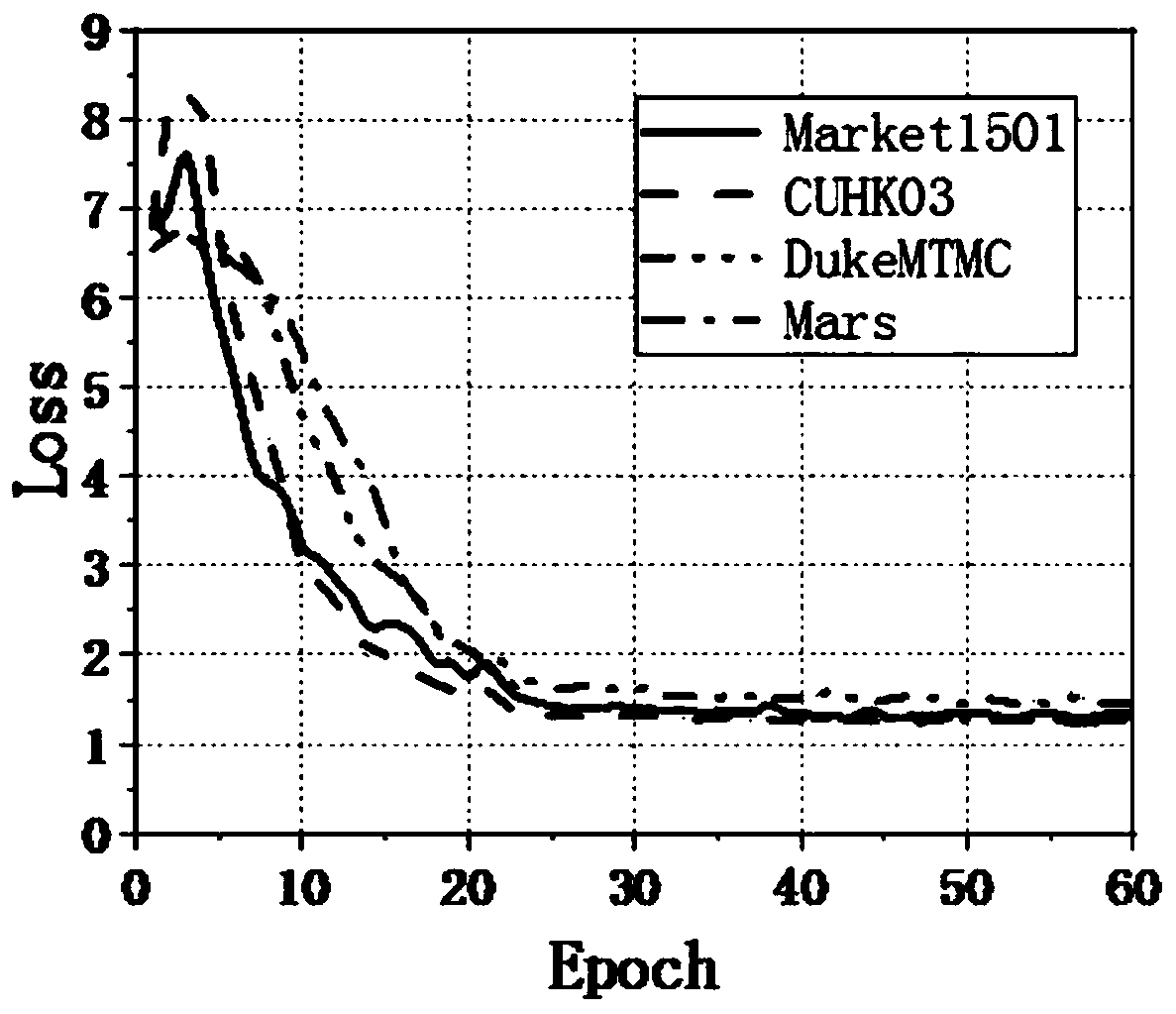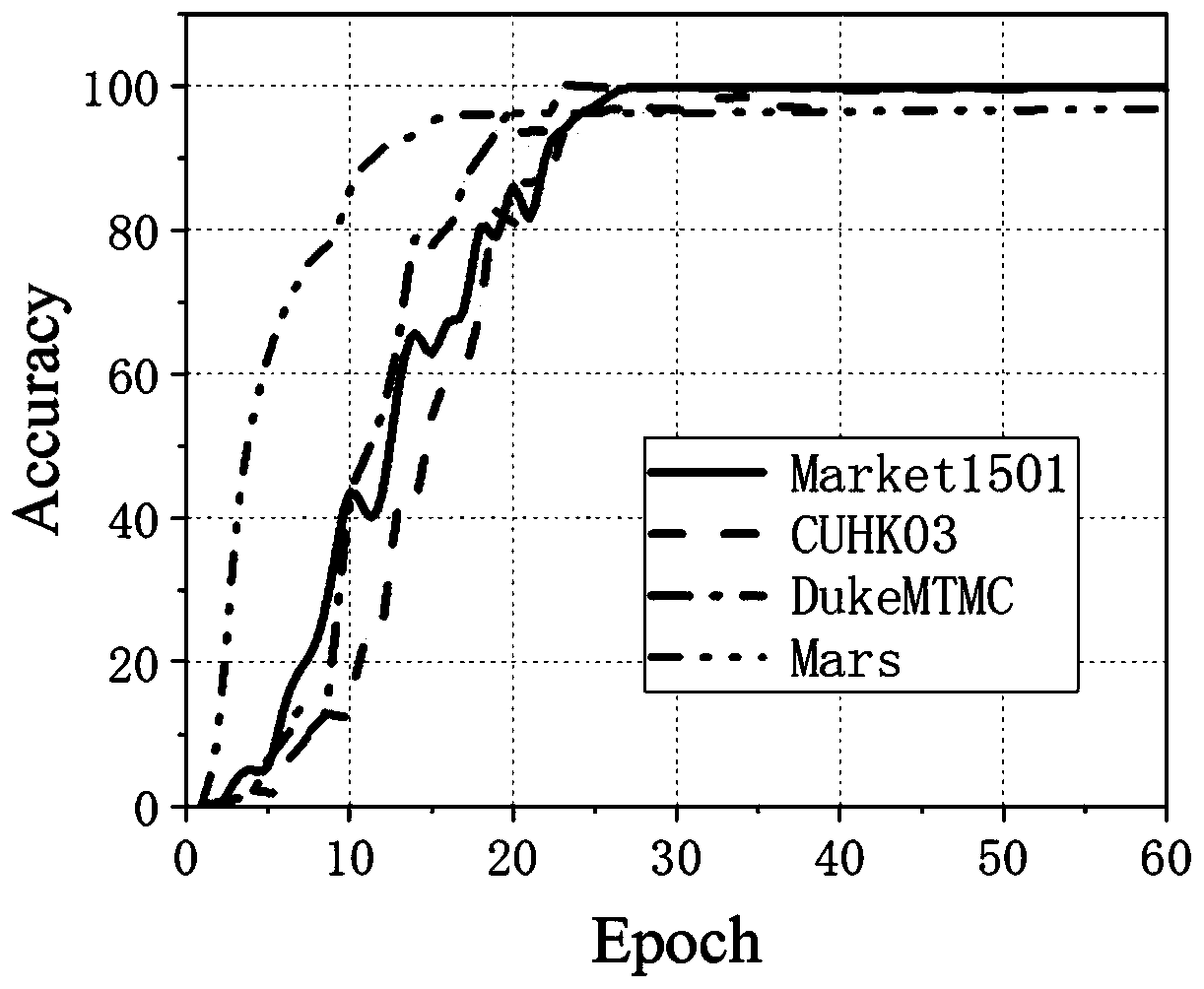Pedestrian re-identification model optimization method based on fusion loss function
A person re-identification and loss function technology, applied in the field of pedestrian re-identification, can solve the problems of infinitely small gradient, high computational cost, lack of accuracy, etc., to achieve rapid optimization, reduce redundant parameters, and improve the effect of similarity
- Summary
- Abstract
- Description
- Claims
- Application Information
AI Technical Summary
Problems solved by technology
Method used
Image
Examples
Embodiment Construction
[0026] The technical solutions of the present invention will be further described below in conjunction with the accompanying drawings and embodiments.
[0027] A kind of pedestrian re-identification model optimization method based on fusion loss function described in the present invention, such as figure 1 shown, including the following steps:
[0028] (1) After the pedestrian re-identification model is obtained by neural network training, the loss of each pedestrian image feature space in the model is calculated by using the cross-entropy loss function. Since the cross-entropy loss function is a logarithmic function, it can still maintain a high gradient state when it is close to the upper boundary, so the convergence speed of the model will not be affected. Using the cross-entropy loss function can quickly obtain the loss value used to determine the construction of the triple object, which is more accurate and faster than directly using the triple loss function to construct...
PUM
 Login to View More
Login to View More Abstract
Description
Claims
Application Information
 Login to View More
Login to View More - R&D
- Intellectual Property
- Life Sciences
- Materials
- Tech Scout
- Unparalleled Data Quality
- Higher Quality Content
- 60% Fewer Hallucinations
Browse by: Latest US Patents, China's latest patents, Technical Efficacy Thesaurus, Application Domain, Technology Topic, Popular Technical Reports.
© 2025 PatSnap. All rights reserved.Legal|Privacy policy|Modern Slavery Act Transparency Statement|Sitemap|About US| Contact US: help@patsnap.com



